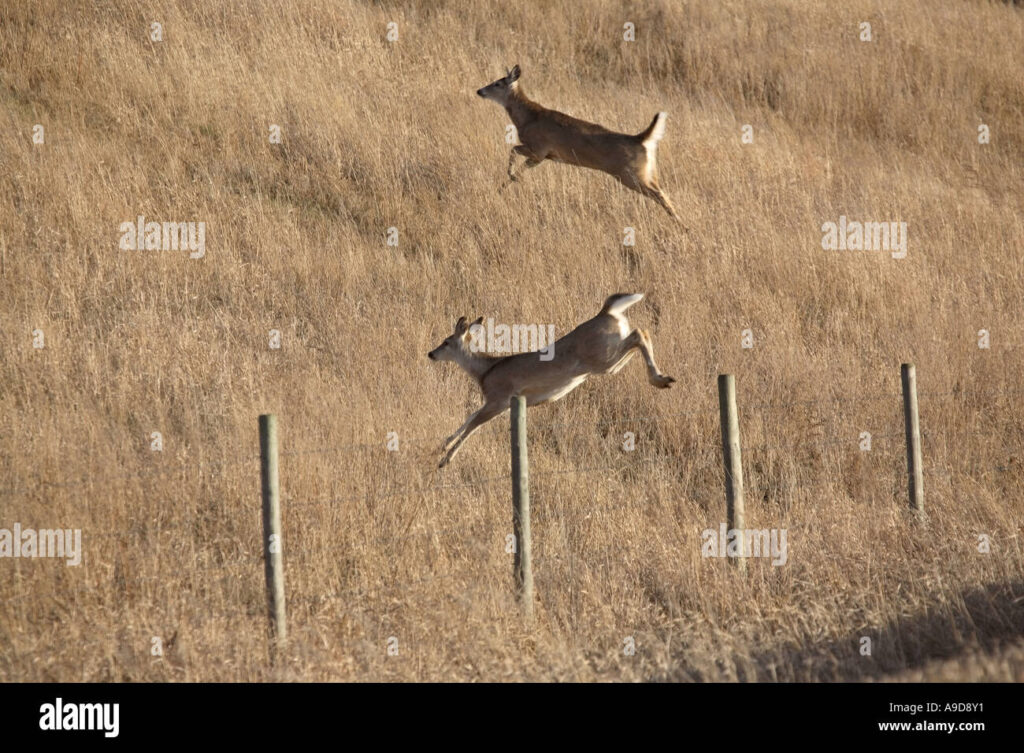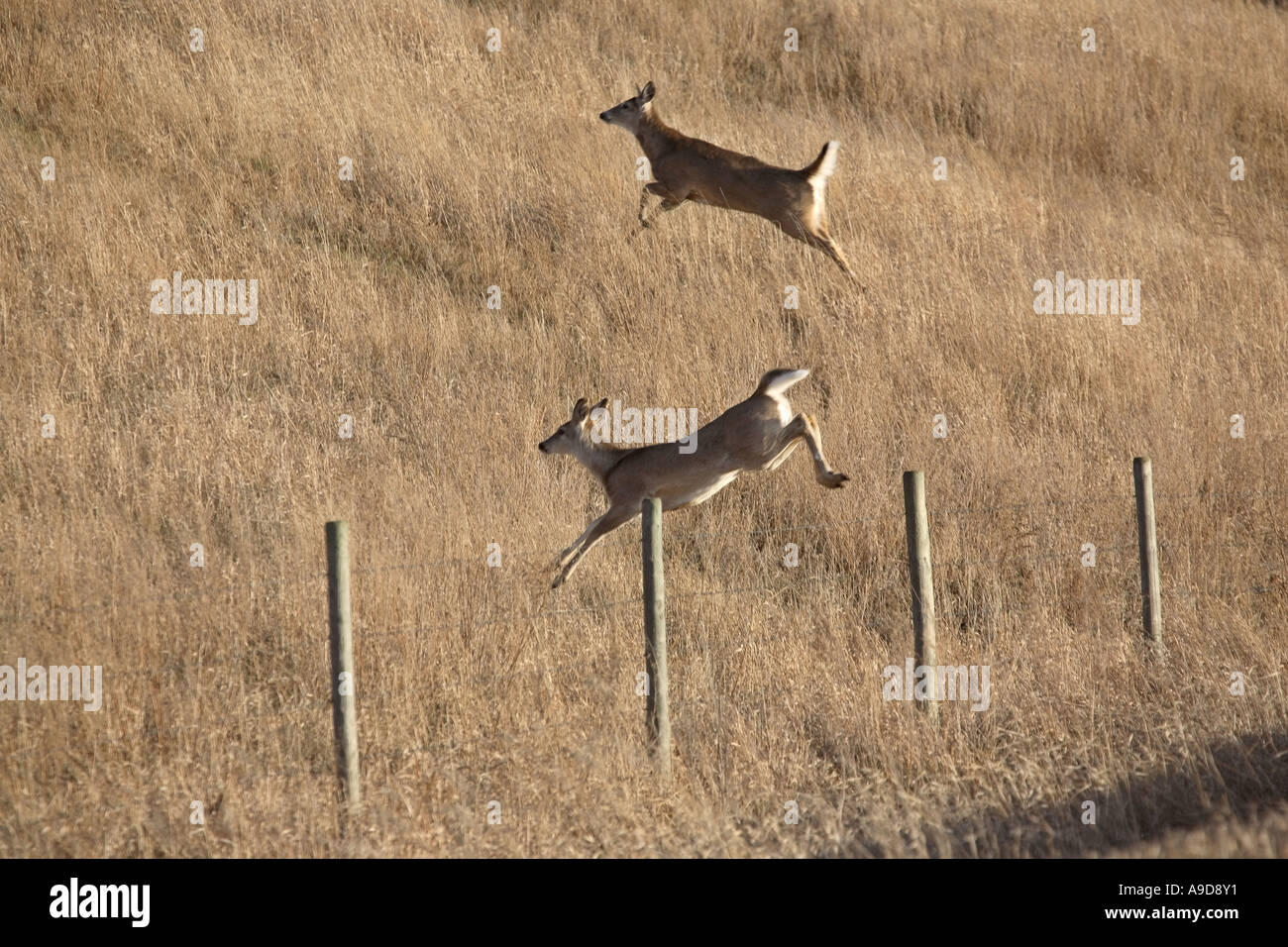
Barbed Wire Deer Fence: An Effective and Ethical Solution for Wildlife Management
Deer, while majestic creatures, can pose significant challenges for property owners, farmers, and conservationists. Their browsing habits can decimate gardens, destroy crops, and disrupt delicate ecosystems. Effective deer management strategies are crucial for mitigating these issues, and one such strategy is the implementation of a barbed wire deer fence. While the term might conjure images of harsh barriers, a well-designed and properly installed barbed wire deer fence can offer a cost-effective and surprisingly ethical solution for controlling deer populations and protecting valuable resources. This article will delve into the nuances of using barbed wire deer fences, exploring their benefits, drawbacks, proper installation techniques, and ethical considerations.
Understanding the Need for Deer Management
Before diving into the specifics of barbed wire deer fences, it’s essential to understand why deer management is necessary. Deer populations have surged in many areas due to factors like habitat fragmentation, reduced predator populations, and supplemental feeding. This overpopulation leads to several problems:
- Agricultural Damage: Deer can cause extensive damage to crops, orchards, and vineyards, resulting in significant financial losses for farmers.
- Residential Damage: Gardens, landscaping, and ornamental plants are vulnerable to deer browsing in residential areas.
- Ecological Imbalance: Overgrazing by deer can deplete native plant species, alter habitat structure, and negatively impact other wildlife.
- Vehicle Collisions: Deer-vehicle collisions are a serious safety concern, causing injuries, fatalities, and property damage.
- Disease Transmission: Deer can carry ticks that transmit Lyme disease and other illnesses to humans and pets.
Various deer management techniques exist, ranging from lethal methods like hunting and culling to non-lethal approaches like repellents and fencing. The choice of method depends on factors like the severity of the problem, local regulations, and ethical considerations. A barbed wire deer fence often presents a pragmatic middle ground, offering effective protection without resorting to lethal control.
The Benefits of a Barbed Wire Deer Fence
While the name “barbed wire” might sound intimidating, when used correctly in a barbed wire deer fence, it offers several advantages over other fencing options:
- Cost-Effectiveness: Compared to woven wire or solid panel fences, barbed wire is a relatively inexpensive fencing material. This makes it an attractive option for large properties or areas with limited budgets.
- Durability: High-quality barbed wire is made from galvanized steel, which is resistant to rust and corrosion. A well-maintained barbed wire deer fence can last for many years.
- Ease of Installation: Barbed wire fences are relatively easy to install, requiring basic tools and skills. This can save on labor costs.
- Effective Deterrent: The barbs on the wire act as a deterrent, discouraging deer from attempting to jump or pass through the fence.
- Visibility: The open design of a barbed wire deer fence allows for good visibility, reducing the risk of deer accidentally running into it.
Considerations and Potential Drawbacks
Despite its benefits, using a barbed wire deer fence isn’t without potential drawbacks:
- Risk of Injury: The barbs can potentially injure deer or other animals that come into contact with the fence. Proper fence design and maintenance are crucial to minimizing this risk.
- Aesthetics: Some people find barbed wire fences aesthetically unappealing. However, this can be mitigated by incorporating landscaping or using alternative fencing materials in more visible areas.
- Maintenance: Barbed wire fences require regular maintenance to ensure they remain effective and safe. This includes repairing broken wires, tightening loose strands, and removing vegetation that may obstruct the fence.
- Regulations: Some areas may have regulations regarding the use of barbed wire fences, particularly near residential areas or public trails. It’s important to check local ordinances before installing a barbed wire deer fence.
Proper Installation Techniques for a Barbed Wire Deer Fence
The effectiveness and safety of a barbed wire deer fence depend heavily on proper installation. Here are some key considerations:
- Height: A barbed wire deer fence should be at least 8 feet tall to effectively deter deer from jumping over it.
- Number of Strands: A minimum of five strands of barbed wire is recommended, with the wires spaced progressively closer together towards the bottom.
- Wire Spacing: The bottom wire should be no more than 10 inches off the ground to prevent deer from crawling under the fence. The spacing between the top wires can be wider.
- Post Spacing: Posts should be spaced no more than 10-12 feet apart to provide adequate support for the fence.
- Post Material: Use sturdy posts made from wood, metal, or composite materials. Corner posts should be braced for added stability.
- Wire Tension: Properly tension the barbed wire to prevent sagging and maintain its effectiveness. Use wire stretchers or tensioning tools for this purpose.
- Safety Considerations: Wear gloves and eye protection when handling barbed wire. Use caution when working with sharp tools and equipment.
Ethical Considerations When Using Barbed Wire Deer Fences
The use of barbed wire raises ethical concerns about the potential for injury to wildlife. While a properly designed and maintained barbed wire deer fence can minimize this risk, it’s important to consider the following ethical guidelines:
- Choose Appropriate Wire: Use barbed wire with blunt barbs to reduce the risk of injury. Avoid using razor wire or other excessively sharp materials.
- Maintain the Fence Regularly: Inspect the fence regularly for damage and repair any broken wires or loose strands promptly. This will prevent deer from becoming entangled in the fence.
- Provide Escape Routes: Consider creating gaps or openings in the fence to allow deer and other animals to escape if they become trapped.
- Avoid Blocking Migration Routes: Be mindful of deer migration routes and avoid constructing fences that block these routes. This can disrupt natural deer movements and lead to increased mortality.
- Consider Alternative Fencing Options: If ethical concerns are paramount, explore alternative fencing options that are less likely to cause injury, such as woven wire or electric fences.
Alternatives to Barbed Wire Deer Fences
While a barbed wire deer fence can be an effective solution, several alternatives exist, each with its own advantages and disadvantages:
- Woven Wire Fences: Woven wire fences are more aesthetically pleasing and less likely to cause injury than barbed wire fences. However, they are more expensive and can be more difficult to install.
- Electric Fences: Electric fences deliver a mild shock to deer, deterring them from approaching the fence. They are relatively inexpensive and easy to install, but require a power source and regular maintenance.
- Solid Panel Fences: Solid panel fences, such as wood or vinyl fences, provide complete protection from deer. However, they are the most expensive option and can obstruct views.
- Deer Netting: Deer netting is a lightweight and inexpensive option for protecting small areas, such as gardens or individual trees. However, it is not as durable as other fencing materials.
- Repellents: Deer repellents can be sprayed on plants to deter deer browsing. However, they are often ineffective in areas with high deer populations and require frequent reapplication.
Conclusion: Finding the Right Balance
A barbed wire deer fence offers a practical and often cost-effective solution for managing deer populations and protecting valuable resources. However, it’s crucial to weigh the benefits against the potential drawbacks and ethical considerations. Proper installation, regular maintenance, and a commitment to minimizing the risk of injury to wildlife are essential for responsible use of barbed wire deer fences. By carefully considering all factors and exploring alternative options, property owners can find the deer management strategy that best suits their needs and values. Always consult with local wildlife authorities and fencing professionals to ensure compliance with regulations and best practices. Ultimately, the goal is to strike a balance between protecting property and respecting the natural world. [See also: Deer Fencing Options: A Comprehensive Guide] [See also: How to Install a Deer Fence: A Step-by-Step Tutorial] [See also: Ethical Considerations in Wildlife Management]

